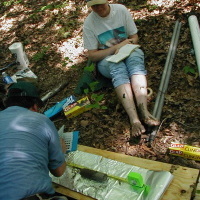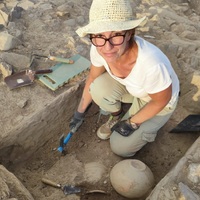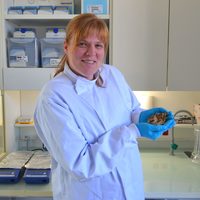
Deborah Barsky
Related Authors
Tristan Carter
McMaster University
Kristen J Gremillion
Ohio State University
Ellery Frahm
Yale University
David Seamon
Kansas State University
Shaun Gallagher
University of Memphis
Marta Diaz-Guardamino
Durham University
Karen Ruebens
University of Reading
Miljana Radivojević
University College London
Paloma de la Peña
University of Granada
Iain Davidson
University of New England - Australia
InterestsView All (21)









Uploads
Papers by Deborah Barsky
yielded the earliest Oldowan stone tools in
the world. Artefacts from the East Gona
(EG) 10 site date back 2.6 million years.
Analysis of the lithic assemblage from EG 10
reveals the earliest-known evidence for
refitting and conjoining stone artefacts. This
new information supplements data from
other Oldowan sites in East Africa, and
provides an important insight into the
technological capacities and evolutionary
development of hominins during this period.
abundant small-sized flakes and their corresponding cores, and are characterized by their structural dichotomy of heavy- and light-duty tools. This paper explores the significance of the lesser known heavy-duty tool component, providing
data from the late Lower Pleistocene sites of Barranco Leo´n and Fuente Nueva 3 (Orce, Spain), dated 1.4–1.2 Myr. Using quantitative and qualitative data from the large-sized limestone industries from these two major sites, we
present a new methodology highlighting their morpho-technological features. In the light of the results, we discuss the shortfalls of extant classificatory methods for interpreting the role of percussive technology in early toolkits. This work is rooted in an experimental program designed to reproduce the wide range of percussion marks observed on the limestone artefacts from these two sites. A visual and descriptive reference is provided as an interpretative
aid for future comparative research. Further experiments using a variety of materials and gestures are still needed before the elusive traces yield the secrets of the kinds of percussive activities carried out by hominins at these,
and other, Oldowan sites.
yielded the earliest Oldowan stone tools in
the world. Artefacts from the East Gona
(EG) 10 site date back 2.6 million years.
Analysis of the lithic assemblage from EG 10
reveals the earliest-known evidence for
refitting and conjoining stone artefacts. This
new information supplements data from
other Oldowan sites in East Africa, and
provides an important insight into the
technological capacities and evolutionary
development of hominins during this period.
abundant small-sized flakes and their corresponding cores, and are characterized by their structural dichotomy of heavy- and light-duty tools. This paper explores the significance of the lesser known heavy-duty tool component, providing
data from the late Lower Pleistocene sites of Barranco Leo´n and Fuente Nueva 3 (Orce, Spain), dated 1.4–1.2 Myr. Using quantitative and qualitative data from the large-sized limestone industries from these two major sites, we
present a new methodology highlighting their morpho-technological features. In the light of the results, we discuss the shortfalls of extant classificatory methods for interpreting the role of percussive technology in early toolkits. This work is rooted in an experimental program designed to reproduce the wide range of percussion marks observed on the limestone artefacts from these two sites. A visual and descriptive reference is provided as an interpretative
aid for future comparative research. Further experiments using a variety of materials and gestures are still needed before the elusive traces yield the secrets of the kinds of percussive activities carried out by hominins at these,
and other, Oldowan sites.
Palabras clave: Expansión humana, Orce, Pleistoceno Inferior, evolución tecnológica, adaptación, paleoecología humana, Barranco León, Fuente Nueva 3.
The municipality of Orce, in the Guadix-Baza basin (Granada), contains the earliest record of human occupation in Europe, on the sites of Barranco León and Fuente Nueva 3. This paper presents the results obtained and future lines of work that the current research project has approached in the field of archaeology and human behaviour: adaptive technology, resource procuring systems, the acquisition of food resources, land zoning, and the routes and origins of the settlements established in Orce. Finally, the paper looks at the process of the evolution of human adaptation down to the introduction of Mode 2, or Acheulean, about which there are also uncertainties to be solved, such as its chronology and its exogenous or endogenous nature in relation to Europe. The present article is an introduction and an approach for the future in all these lines of work.
Keywords: Human Expansion, Orce, Lower Pleistocene, Technological Evolution, Adaptation, Human Palaeoecology, Barranco León, Fuente Nueva 3.